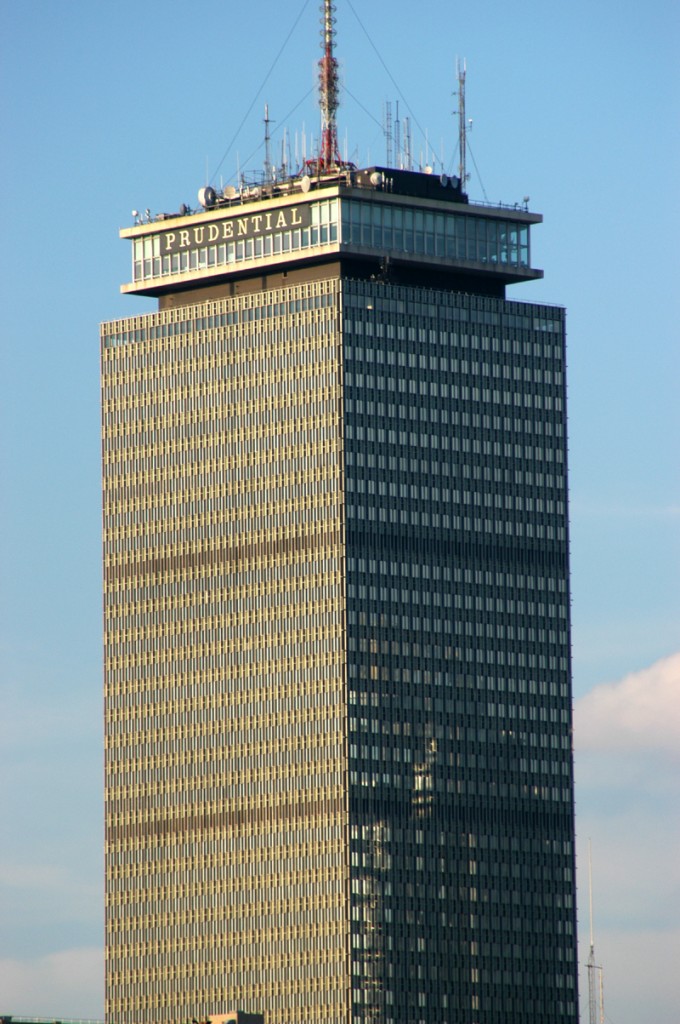
Dave Brubeck, one of my musical heroes, was respected by every musician I have ever known. He was the first American whose jazz excited me. My first exposure to his music was through one of his big hit songs (yes, a jazz musician who was creative, brilliant, and commercially successful without having “sold out”). That hit was “Take Five,” written by his sax player, Paul Desmond. I was too young to play or analyze it – I only knew that it made me happy (I think I was five years old when it was released).
I was extremely fortunate to have met Dave Brubeck once. He seemed to be as great a person as his music. But before I met him, I met his drummer, Joe Morello who came to Framingham North High School (now known as Framingham High School) and gave a masterclass. I remember that Morello was brilliant, looked like Roy Orbison (especially with his thick horn-rimmed glasses) and played complex meters and really well. I liked but didn’t love what I was hearing but had enormous respect for him. It’s easy to fall for what a passionate and virtuosic person is putting out, regardless of your age, culture, and in my case, as a young kid at a very heady jazz drum master class, maturity. I knew that someday I’d explore jazz, just not that day or month. (It took Miles Davis for me to “get it” – jazz – completely. And then came the ultimate for me – Weather Report)
Brubeck, one of my heroes, studied with French composer and Mills College professor, Darius Milhaud, another hero of mine. Milhaud, as well as a few other “serious” composers/art music composers of the first quarter of the 20th century, was profoundly impacted by American jazz and incorporated elements of jazz into his composing. My favorite Milhaud composition is his hugely influential 1923 work, La creation du monde, here conducted by Leonard Bernstein. Click that link and for 17 minutes enter a fascinating world.
* * * * * * * * *
One of the important features of a lot of Dave Brubeck’s music is his use of rhythm and especially uncommon time signatures. Brubeck met with resistance from Columbia Records when he insisted on having songs with unusual meter/time signatures on his brilliant million-selling album, Time Out. Fortunately for music, the public and Columbia Records, they gave in.
I have selected three (3) Dave Brubeck songs, each in a different and unusual meter. 5 beats per measure, 7 beats per measure and 9 beats per measure are far less common than the most common meter in Western music – 4 beats per measure. In keeping with the idea of three – 3 different time signatures/meters – I have also compiled three (3) sets of three (3) songs each. In each of these three 3-song sets, I have chosen a Brubeck composition and followed it with two (2) other compositions that share the same number of beats. In each example, the songs I have selected are not of the same style.
I grouped these songs together in this manner so as to hear Dave Brubeck’s music and his take on an unusual meter followed by other artists’ versions of the same meter. This is the manner in which I usually approach music – find music from disparate, seemingly unrelated styles and periods and locate what they have in common. It might be my inner anthropologist at work. It’s also how my Dad lived – connecting dots that did not reach out to be connected.
5
5 5 5 5 5
Dave Brubeck – Take Five (1959) This is not the original studio recording but a live faster version recorded in 1961. This is how most of the world learned to feel and count five (5) beats per measure. 5 = 3 + 2. To me, it still seems the best way to subdivide 5 beats. Paul Desmond, not Dave Brubeck, wrote Take Five. As with the other time signatures below, Brubeck is not the first to have used them. But the music he wrote that has these particular time signatures is superb and deserves to be widely known.
Lalo Schifrin – Mission Impossible Theme (1966) Lalo Schifrin’s theme music to the television series, Mission Impossible, in addition to being the best theme song in the history of television theme songs, is the second best known example of 5/4. Like Paul Desmond’s Take Five, Schifrin has also used 5 = 3 + 2. Lalo Schifrin.
Uakti – Ovo Da Serpente (The Serpent’s Egg) (1987) I’ve adored the music and sound of Uakti since I first heard them in the early 1980’s on a Milton Nascimento recording. This Brazilian ensemble has also recorded with Paul Simon and Philip Glass. With respect to Simon and Glass, in my opinion, Uakti was the “big deal” in these recordings. Back in the mid-1990’s I flew from Nashville to Boston just to hear Uakti perform live (at Boston University) in a short American tour. As I recall, Boston and New York were the only U. S. East coast cities on that tour. (I would love to write more about Uakti in other blog posts.)
7
7 7 7 7 7 7 7
Dave Brubeck – Unsquare Dance (1961) Just as Dave had made 5/4 simple, normal and fun, in “Unsquare Dance he makes 7/4 your new favorite meter. 7 = 2 + 2 + 3. This is the Brubeck studio recording choreographed.
Pat Metheny – Finding & Believing (1992) Pat Metheny wrote and performed most of the instruments on this song in 7/4 and throughout his great and massive 1992 album, Secret Story.
Sting – Straight To My Heart (1987) One of my favorite aspects of Sting as a composer is his use of – what I respectfully call – “music theory tricks.” If one transcribes and analyzes Sting’s music, it is obvious that Sting has (maybe often) considered structural aspects of music before and during his composing. (To discuss Sting’s music theory tricks more would mean writing more about music theory and structure, something I do not want to do here.)
9
9 9 9 9 9 9 9 9 9
Dave Brubeck – Blue Rondo A La Turk (1959) I selected the brilliant night photograph of the Eiffel Tower for the cover of this blog post for several reasons.
1. The Eiffel Tower is one of the world’s most unique and magnificent structures immediately recognizable to people from all over our planet. The same can be said for Dave Brubeck’s music.
2. The Eiffel Tower is a symbol of not only Paris and France but the entire European Union, and it was in Europe that Brubeck heard many complex and irregular time signatures. Blue Rondo A La Turk revealed Brubeck’s influence by and capture of Turkish rhythms. (Beethoven and Mozart had also been enthralled with Turkish music.)
3. The Eiffel Tower is pointing upward. Is there a heaven above? Above has always fascinated many of us and pointing and living upward is inspirational to me. Dave Brubeck represents upward.
Blue Rondo A La Turk is a masterpiece. 9 = 2 + 2 + 2 + 3. I started to learn to play Blue Rondo A La Turk in my usual way – put on the record and play along with it. I kept putting the needle back to the opening and early sections as it is not easy to learn this work, especially as an untrained high school musician. But when I knew I’d come to a stop and not be able to ever play this entire thing was when I got to 1.36 – 1.39 of the song – the FANTASTIC & BIG CHORDS in contrary motion. Damn it – that was going to require a lot of practice. I did the easy thing – quit trying to play it, love what Brubeck was doing and move on!
And then comes this abruptly different, laid back bluesy section at 1.53 – 1.57. For all of four seconds, the song changes character until the agitated opening 9 = 2 + 2 + 2 + 3 thing returns abruptly. (There is a musical concept of “multiple time” that would describe this as well.) If you have it in you, write a Blue Rondo A La Turk and place it is as your album’s opening track.
Milton Nascimento & Wayne Shorter – Ponta De Areia (1974) Ponta De Areia is the opening song on the extremely important album, Native Dancer, an album that featured the first-time collaborative writing and performing of music legends from the United States (Wayne Shorter) and Brazil (Milton Nascimento). Nascimento’s 9 beats per measure (9/4 rather than 9/8) are really long, temporally speaking. Brubeck’s 9 fly by, whereas Nascimento’s 9 almost contain story lines as the rhythm section is left to create subplots within. Listen especially to how much takes place in the drums, bass & keyboard from 0.41 – 1.28, a relatively long span of time with lots of smart activity but one which features only eight (8) measures of 9/4.
Sting – I Hung My Head (1996) – Sting’s I Hung My Head epitomizes what I mean by “music theory tricks” above. in this song, Sting divides 9 in a unique manner: 5 beats followed by 2 and 2. 9 = 5 + 2 + 2. You can hear this pattern in the bass. The drummer is left to also articulate a 9-beat pattern but his is even more peculiar and agitational, in terms of the context. This drum pattern is in the forefront. Not that drummers are often hard to notice but in this case, the drum accents predominate and propel the band. Whereas the bass plays 9 = 5 + 2 + 2, the drum rearranges this palindromically (not a palindrome per se, but palindromically) : 9 = 2 + 5 + 2.
* * * * * * * * *
This post went in a direction different from writing a eulogy. (I had not intended to write a eulogy – I only intended to write a few sentences more than my Foursquare entry last night shortly after I heard the sad news about Dave Brubeck.) To me this post is a conversation (at this point, only a monologue) about great music. When you’ve “received” a great work, it leads to more thoughts and appreciation of the work and that should lead to… “Have you heard this?” Or… “What do you think about this?”
I am deeply grateful for Dave Brubeck – who he was, what he gave us, where he led us, and how he inspired us.














